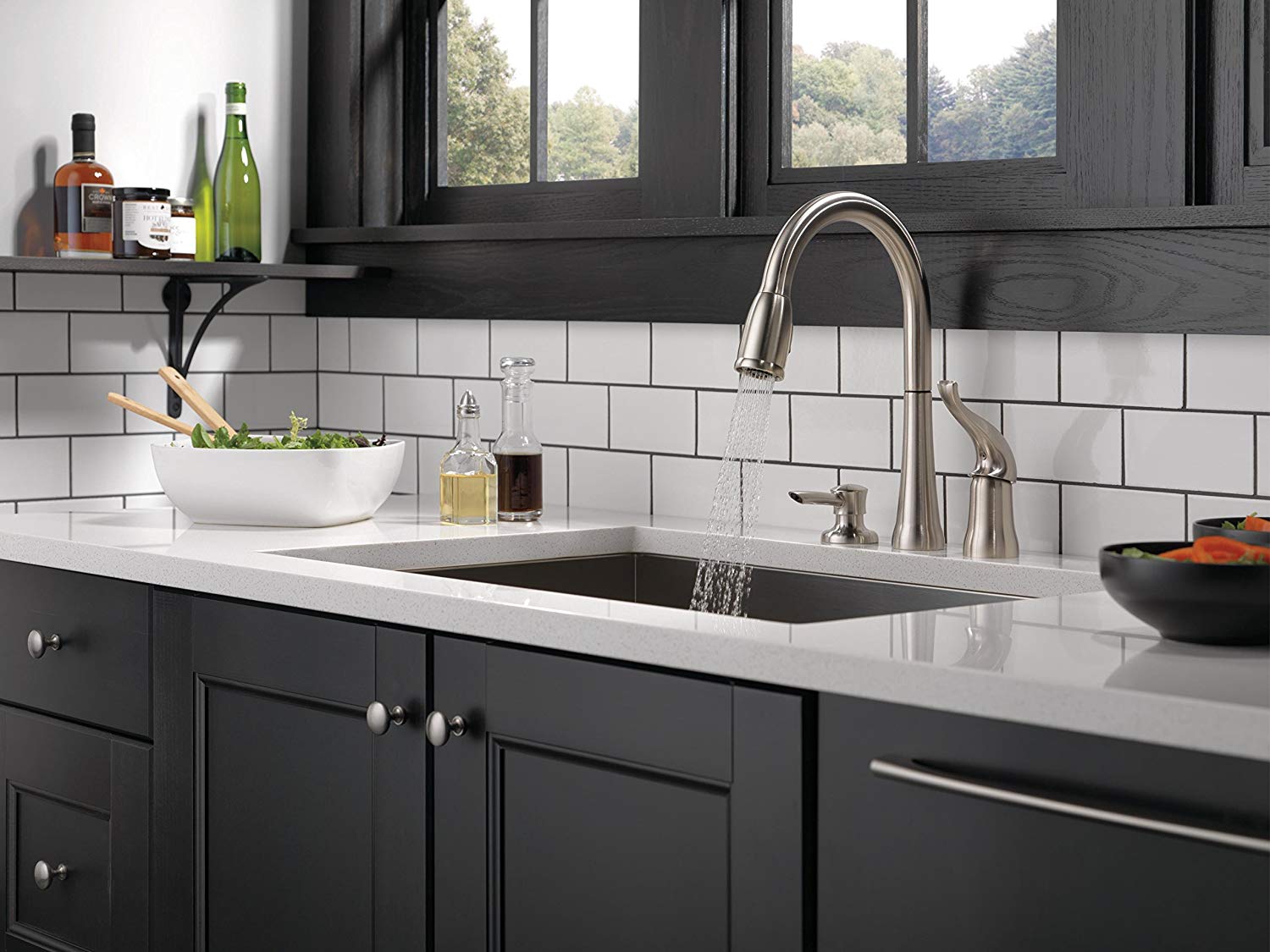Working as a bath and kitchen designer means that you will need to be able to identify the right materials, fixtures, and colors to create a pleasurable living space. Being knowledgeable about carpeting, flooring, lighting, plumbing, and wall coverings will be a big part of what you do. Additionally, you must be proficient in specialized software, such as AutoCAD, to create and design plans for the living space. The job of a bath and kitchen designer entails more than just selecting materials and fixtures, as the designer must be able to visualize and conceptualize the entire living space. An effective designer will be able to provide an on-budget solution that works with the needs of the homeowner. Being able to identify furniture and appliances that fit the space is also a valuable skill. Bath and Kitchen Design Careers: What You Need to Know
The latest trend in bath and kitchen design is to focus on energy efficiency and sustainability. Designers are being encouraged to incorporate green products and eco-friendly materials that can reduce the home’s energy consumption. Designers also need to use water-saving fixtures in order to reduce water consumption. Additionally, homeowners are increasingly clamoring for personalized and affordable designs that reflect their personal taste. As a bath and kitchen designer, it will be your job to find the perfect balance between functionality and style. You will need to have an eye for fashion and be able to identify products and materials that are both attractive and reasonably priced. Trends in Bath and Kitchen Design Careers
When it comes to designing a kitchen or bathroom, there are certain considerations that every homeowner should take into account. The first is the size of the space. It is important that the designer be able to measure the area accurately before any design work is done. The homeowner should also come prepared with a list of ideas and features they would like, as well as a budget. This will help the designer come up with the most cost-effective solution. Another consideration is the desired level of functionality. The kitchen and bath should be designed in such a way that they are comfortable and practical. Additionally, there should be plenty of storage space to accommodate necessary items. Lastly, the designer should take into account the type of materials to be used, as different materials may affect the durability and upkeep of the bathroom or kitchen. Bath and Kitchen Design Considerations for Homeowners
Becoming a kitchen and bath designer requires both educational qualifications and real-world experience. First and foremost, successful designers must have a deep understanding of interior design principles. It is also important to have a working knowledge of plumbing, electrical wiring, and cabinetry. A designer should also be well-versed in construction basics, including the use of tools. Moreover, a kitchen and bath designer must have in-depth knowledge of various materials, including tiles, cabinetry, and countertops. They should also possess basic knowledge of building codes and regulations, to ensure the design meets all local standards. Finally, it is essential that a designer posses good communication and customer service skills, as the job requires them to interact with clients on a regular basis.Tips on Becoming a Kitchen and Bath Designer
The job outlook for bath and kitchen designers is excellent, as the interior design industry is always growing. According to the Bureau of Labor Statistics, the average annual salary for designers is approximately $54,000. This number may fluctuate based on location, experience, and other factors such as certifications or awards. As the housing market continues to grow, there will be an increased demand for bathrooms and kitchens remodeled and designed by skilled professionals. With the right qualifications and experience, you could have the opportunity to reach the higher levels of salary available in this field.Salary and Job Outlook for Bath & Kitchen Designers
There are several educational opportunities available to aspiring kitchen and bath designers. Most designers have at least an associate’s degree in interior design, and some have gone on to get an advanced degree. Aspiring designers should also have some form of formal training from either a community college or company sponsored program. In addition to experience in a classroom setting, it is essential to gain hands-on experience in the field. Internships or apprenticeships are a great way to gain an understanding of the industry. They provide an opportunity to familiarize oneself with the tools of the trade, gain insight into the design process, and experience the customer service side of the design profession. The Education and Training Necessary for a Kitchen and Bath Design Career
The interior design industry has seen a rise in online courses in bath and kitchen design in recent years. These courses allow aspiring designers to learn the fundamentals of design at their own pace and in the comfort of their own homes. While some of these courses may merely serve as an introduction to the field, others offer more in-depth instruction. Additionally, many brick-and-mortar institutions also offer courses in kitchen and bath design. These courses usually require some form of registration and may include guest lecturers or field trips. Taking courses from an accredited institution is the best way to gain the necessary skills to work as a successful designer.Online and In-Person Courses in Bath and Kitchen Design
Information and Communication Technology (ICT) is increasingly being used in the design industry, and it is becoming a vital tool for design professionals. Everything from 3D visualization and drafting to resource management and cost estimation can be accomplished through ICT. Automation is also rapidly becoming a tool of choice, as it can help designers finish projects faster and more efficiently. ICT in bathroom and kitchen design also helps to facilitate communication between clients and designers. Through email, video chat and call, and other digital tools, designers can get feedback from clients much faster. This allows them to make more informed decisions about the design process. ICT in Bathroom & Kitchen Design Careers
When looking for a job in bath and kitchen design, start by expanding your knowledge and experience in the industry. Become certified in kitchen and bath design, attend seminars, and build up an impressive Design Portfolio. This is important, as it showcases your creativity and skill. Consider joining professional associations to network with other designers and stay up to date on industry trends. Having a good online presence is also important when it comes to finding a job in bath and kitchen design. Consider setting up a website, joining social media platforms, and attending design-oriented events and conferences. Be sure to make use of blogs and online forums to stay in touch and up to date on industry news. How to Find a Job in Bath & Kitchen Design
Designing a kitchen or bathroom is an art form, and it takes a certain combination of experience, skills and talent to achieve success. A good kitchen and bath designer must have a deep understanding of interior design elements, be creative, and be willing to go that extra mile to make their client happy. They must also be able to think outside the box and recognize trends in the market. Additionally, a bath and kitchen designer must be able to effectively communicate with both customers and suppliers. Good customer service and sales skills are essential, as designers must be able to present their ideas to the customer in a professional manner. A good designer will also be organized and detail-oriented, as it is likely they will be working on several projects and navigating tight deadlines. Bath and Kitchen Designing: What Are the Qualities of a Good Designer?
Bath and kitchen design is an exciting and rewarding profession, offering designers the opportunity to express their creativity and help create attractive and functional living spaces. However, becoming a successful designer requires an eye for detail, a knowledge of interior design principles, and a deep understanding of both the design and construction processes. Taking design courses, gaining experience, and building up a portfolio are all essential steps in establishing a career in bath and kitchen design.PRIMARY_Bath and Kitchen Design as a Career
The Growing Popularity of Bath & Kitchen Design
 Bath & kitchen design is a
growing career
field, one that is increasing in popularity with each day. With the demand for unique, well-designed, and functional homes on the rise, talented bath and kitchen design professionals are needed to design beautiful and practical installations.
Bath & kitchen design is a
growing career
field, one that is increasing in popularity with each day. With the demand for unique, well-designed, and functional homes on the rise, talented bath and kitchen design professionals are needed to design beautiful and practical installations.
Bath & Kitchen Design as an Artform
 The art of
bath & kitchen design
is truly unique, as a designer must consider multiple factors when crafting a custom space. Engaging in creative thought and creative planning, they must pay attention to electricity, gas, and all other necessary components when laying out a space. Additionally, they must ensure that all fixtures, colors, and components work together to create a complete look.
The art of
bath & kitchen design
is truly unique, as a designer must consider multiple factors when crafting a custom space. Engaging in creative thought and creative planning, they must pay attention to electricity, gas, and all other necessary components when laying out a space. Additionally, they must ensure that all fixtures, colors, and components work together to create a complete look.
The Benefits of Bath & Kitchen Design as a Career
 One of the greatest benefits for those looking for a career in
bath & kitchen design
is the flexibility it provides. With the rise of home remodeling, landscaping, and construction, the number of jobs in this area continues to increase. Additionally, as home design trends continually shift, there is always a continuous flow of creative opportunities to explore. Finally, with a steady growth in demand for these services, there is a plethora of job opportunities for those passionate about bath & kitchen design.
One of the greatest benefits for those looking for a career in
bath & kitchen design
is the flexibility it provides. With the rise of home remodeling, landscaping, and construction, the number of jobs in this area continues to increase. Additionally, as home design trends continually shift, there is always a continuous flow of creative opportunities to explore. Finally, with a steady growth in demand for these services, there is a plethora of job opportunities for those passionate about bath & kitchen design.
The Skills and Traits of a Successful Designer
 To be successful in bath & kitchen design, it is important to possess certain skills such as strong communication, organizational, and technical skills. A designer should also have a keen eye for aesthetics as well as a commitment to staying up to date on the latest trends in the field. In addition, a broad understanding of technical processes such as plumbing, electricity, and floor plans is essential. Finally, a successful designer will possess the creative mindset necessary to craft original and inspiring designs.
To be successful in bath & kitchen design, it is important to possess certain skills such as strong communication, organizational, and technical skills. A designer should also have a keen eye for aesthetics as well as a commitment to staying up to date on the latest trends in the field. In addition, a broad understanding of technical processes such as plumbing, electricity, and floor plans is essential. Finally, a successful designer will possess the creative mindset necessary to craft original and inspiring designs.










































































